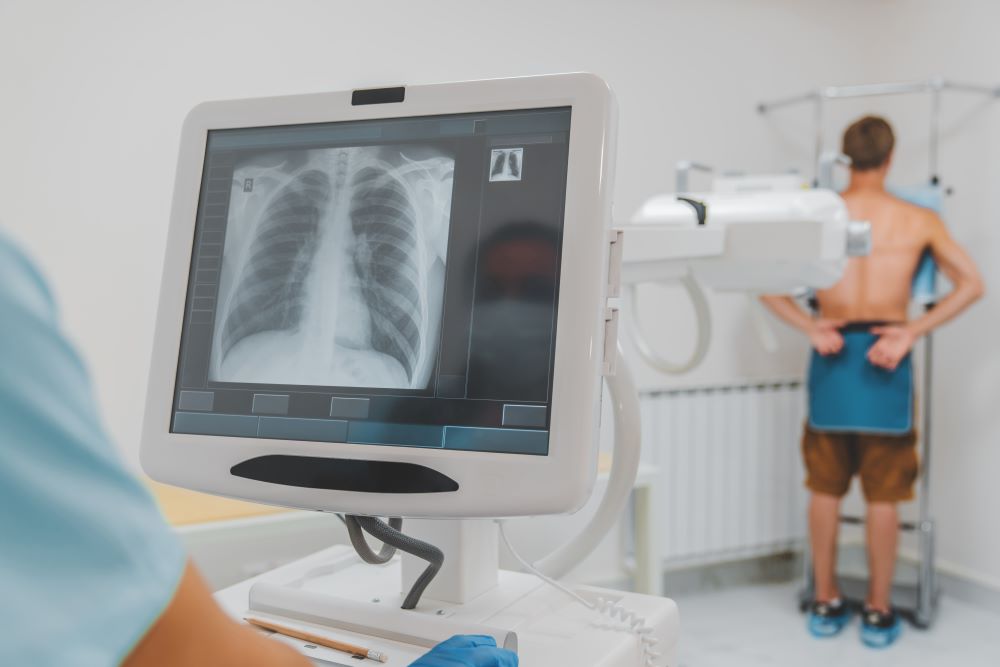10 Most Significant Diseases Caused by Air Pollution

Air pollution not only results in environmental damage but also adversely affects the health of individuals. As per the official World Health Organisation (WHO) website, air pollution kills an estimated seven million individuals globally every year. There are several diseases caused by air pollution due to the pollutants individuals breathe in. Besides causing respiratory ailments, air pollution also affects several other body parts.
Read on to gain a detailed insight into the various aspects of diseases caused by air pollution!

Table of Contents

What are Air Pollution Diseases?
Diseases related to air pollution are those that result from human exposure to harmful agents such as particulate matter (PM), nitrogen oxides (NOx), sulphur dioxide (SO2), carbon monoxide (CO) and volatile organic compounds (VOCs). The pollutants mentioned above can cause inflammation and irritation of the lung airways, leading to respiratory problems.
Moreover, air pollution is associated with cardiovascular diseases by causing inflammation and oxidative stress. It also increases the risks of lung cancer when there is long-term exposure. This means that children and elderly people have more chances of being affected.
Where are the Causes of Air Pollution Diseases?
Various sources emit these pollutants, leading to air pollution and other diseases. Vehicle emissions like carbon monoxide, nitrogen oxides, and particulate matter contribute to respiratory conditions in the atmosphere. Industrial activities also pollute the environment by releasing chemicals and particulate matter that worsen health issues.
Furthermore, burning fossil fuels for energy produces pollutants such as sulphur dioxide and nitrogen oxides, producing ground-level ozone and fine particulate matter, causing respiratory infections and cardiovascular disease. Other sources include residential heating using solid fuels for cooking, which contributes to indoor and outdoor air pollution, amplifying health risks.
10 Diseases Caused by Air Pollution in Humans
Air pollution profoundly impacts human health, leading to a range of serious diseases. Illustrated below are the various diseases occurring due to air pollution:
1. Cardiovascular Diseases

The fine particulate matter in polluted air can impair the functioning of blood vessels and speeds up calcification in arteries. As per NIEHS researchers, there is a link between short-term daily exposure to nitrogen oxides and an increased risk of haemorrhagic stroke for post-menopausal women.
Exposure to Traffic-Related Air Pollution (TRAP) may lead to lowered levels of high-density lipoprotein (also known as good cholesterol), thereby increasing the risk of cardiovascular diseases.
Moreover, as per a report from the National Toxicology Program (NTP), TRAP exposure raises a pregnant woman’s risk of serious blood pressure changes, also called hypertensive disorders. Individuals looking for “which diseases are caused by air pollution” must note that these are a leading cause of maternal and foetal illness and death, pre-term birth, and low birth weight.
2. Respiratory Diseases

Air pollution causes diseases like asthma, emphysema, and other respiratory ailments like Chronic Obstructive Pulmonary Disease (COPD). All these ailments result from the massive impact of air pollutants on lung development. COPD refers to multiple diseases like emphysema and bronchitis caused due to lung damage because of air pollutants, making it difficult for an individual to breathe.
Moreover, individuals searching “which disease is caused by air pollution” must note that nitrogen oxide and particulate matter (PM) are associated with cases of chronic bronchitis.
Toxic air pollutants can lead to lower respiratory infections that can show up as pneumonia or other ailments. Children are more vulnerable to the development of acute lower respiratory tract infections because their lungs and bodies are still developing. Furthermore, emissions of soot and other pollutants have a harder impact on them compared to adults, thereby leading to several diseases caused by air pollution.
3. Heart Disease

Recent research implies that air pollution accelerates the blockage of arteries, which leads to an increased incidence of ischemic heart disease. Coronary heart disease or ischemic heart disease are names of diseases caused by air pollution, which are associated with the build-up of calcium or other materials like fat within the coronary artery. This, in turn, results in blockages that prevent blood from reaching the heart and other body parts.
4. Cancer

The WHO determined in 2013 that particle pollution can lead to lung cancer. Plus, according to the NIEHS Sister Study, other toxic airborne substances, particularly methylene chloride, which is used in paint removers and aerosol products, are also linked with an increased risk of breast cancer.
In addition to these, individuals willing to know which disease is caused by air pollution must note that occupational exposure to benzene (an industrial chemical and a component of gasoline) can result in leukaemia. Exposure to this compound can also lead to non-Hodgkin’s Lymphoma.
5. Strokes

Particulate air pollution causes strokes that occur when the blood supply to the brain is cut-off. These are one of the diseases caused by air pollution and can prove to be fatal, leading to brain damage or death.In addition to these immediate effects, survivors of such strokes may suffer long-term disabilities, such as impaired speech, mobility, or cognitive function.
6. Allergies

It can be said that the allergens in the air are amplified by atmospheric pollution, thus increasing allergic reactions. Importantly, pollutants like particulate matter and ozone can irritate people's airways, heightening their sensitivities to allergens like mould and pollen, eventually resulting in more frequent and severe allergy attacks.
7. Chronic Sinusitis

Exposure to air pollutants over a long period may result in chronic sinusitis, which is characterised by constant inflammation and swelling of the sinuses. Such symptoms include nasal congestion, facial pain and sinus headaches. In addition, chronic sinusitis usually affects daily activities significantly and sometimes necessitates regular medication.
8. Diabetes

New evidence has shown that there is an increased tendency to develop type 2 diabetes due to exposure to polluted air, especially fine particulate matter (PM2.5). This ultimately leads to insulin resistance because the contaminants can cause oxidative stress and inflammation, which subsequently leads to the condition associated with pre-diabetes.
9. Pregnancy Complications

Air pollution is connected to other problems associated with pregnancy, like low birth weight, preterm birth and infant developmental disorders (Araújo, 2017). Women exposed to pollutants during pregnancy are at risk of damaging both their health and that of the developing foetus. This can impair normal development in the long run.
10. Neurological Disorders

Some studies suggest that there may be a connection between exposure to air pollution over many years and cognitive decline or neurological disorders such as Alzheimer's disease. The brain function can be affected by pollutants due to inflammation, which can lead to oxidative damage.
Which Air Pollutants Lead to Diseases in the Human Body?
Polluted air consists of several air pollutants which are responsible for causing harm to the human body. Some of these toxic pollutants that contribute towards the occurrence of various diseases caused by air pollution are:
What Are the Harmful Effects of Air-Borne Diseases?
Airborne diseases severely affect the respiratory system, making them highly dangerous for people. Some harmful effects of air-borne diseases include:
- These diseases cause severe symptoms like cough, difficulty breathing, and chest pain, thereby affecting an individual's daily activities and general well-being.
- These illnesses also lead to additional complications such as fever, tiredness or severe cases of organ failure or death.
- When outbreaks occur, there are usually two major consequences, one being a high mortality rate. On the other hand, morbidity rates increase significantly, thus straining the already burdened medical facilities/resources.
- Children, old people and patients with pre-existing conditions are at a greater risk of having severe outcomes and longer recovery periods.
- Spread control and lessening the impact of airborne diseases is a must through effective measures like vaccines and good hygiene.
Signs and Symptoms of Diseases Caused by Air Pollution

Air pollution causes various dangerous health effects. Identifying signs and symptoms of illnesses caused by polluted air is important for timely treatment and management.
- Problems Related to Breathing: Continual coughing, wheezing, and shortness of breath can also indicate deteriorating conditions such as asthma or bronchitis. These may become more serious with constant exposure to pollutants.
- Cardiovascular Symptoms: When exposed to dirty air, one might experience chest pains, irregular heartbeats as well as increased risks of heart attacks and strokes. Eventually, these symptoms may worsen pre-existing heart problems.
- Allergic Reactions: Pollutants in the atmosphere can cause allergy symptoms, intensifying sneezing fits, nasal congestion, or itching eyes. On the other hand, for individuals who already have allergies, their situation becomes worse.
- Fatigue and Headaches: Regular tiredness, recurring headaches, and dizziness are some of the impacts of poor air quality on daily activities. Spending a long time in polluted air may also lead to general fatigue, which affects overall well-being.
- Skin Irritation: Airborne allergens can cause rashes and itchiness or worsen existing skin problems. Further exposure to a polluted atmosphere worsens skin health, leading to more problematic persistent skin conditions.
- Reduced Lung Function: Extended contact with air pollution reduces lung capacity, making it hard to take deep breaths or participate in physical exercises. This decrease is linked to long-term breathing conditions.
- Eye Irritation: Itchy and watery eyes, among other symptoms, are common due to airborne irritants. Prolonged exposure to such pollutants can result in continuous eye discomfort, which could require frequent eye drops or other interventions.
What Are the Different Risk Factors for Diseases Caused By Air Pollution?
The risk factors for diseases aggravated by air pollution include geographical location and lifestyle habits.
Both outdoor and indoor air pollutants cause harm to individuals. Individuals come in contact with indoor air pollutants mainly from using biomass, wood, and coal for cooking food. The levels of outdoor air pollution are worse in regions undergoing rapid industrialisation. Huge population areas having unsustainable emission policies are the highest risk areas for living.
How to Diagnose Diseases Caused by Air Pollution?

Diagnosing diseases caused by air pollution involves identifying symptoms and linking them to pollution exposure. Accurate diagnosis is essential for effective treatment and mitigating long-term health impacts.
Treatment Methods for Air Pollution Diseases
Air pollution causes diseases that can be effectively treated by managing symptoms, improving quality of life, and reducing exposure to harmful pollutants.
- Medications: Bronchodilators, corticosteroids, and other medicines are prescribed to manage symptoms and reduce inflammation related to asthma and COPD.
- Oxygen supplementation: In such cases, oxygen therapy aims to improve breathing patterns and raise oxygen levels.
- Modifications to lifestyle: Measures that may be suggested include staying indoors during high-pollution days, quitting smoking and improving indoor air quality.
- Lifestyle Changes: Structured programs involving exercises, education, and counselling can enhance lung capability in pulmonary rehabilitation.
- Environment controls: Using air purifiers is one possible measure for dealing with this problem, along with keeping windows closed during high pollution.
- Immunisation: Preventive measures against respiratory infections that could complicate air pollution-related conditions like flu shots or pneumonia vaccinations.
- Nutritional Support: Diets rich in antioxidants and anti-inflammatory foods are recommended to help mitigate the effects of air pollution on health status
- Medical Follow-Up: Regular reviews with medical practitioners enable periodic assessments of progress achieved while providing room for modification.
What Are the Preventive Measures to Control Disease Caused by Air Pollution?
Controlling diseases caused by air pollution implies implementing innovative control strategies like creating technology to lower emissions and instituting emissions standards.
Source control is an ideal strategy for lowering air pollution. It involves stopping pollution at the source level through several steps, such as using less polluting fuels in nature and improving the efficiency of industrial processes.
Implementing technology to lower emission levels can improve the overall quality of air. For example, using electrostatic precipitators, mechanical collectors and filters on tailpipes and scrubbers on smokestacks are some methods of limiting air pollution. Moreover, combining clean air technology innovations with economic incentives such as emissions caps and emissions trading will encourage organisations to adopt clean energy technology.
In some cases, geographic locations are also responsible for poor air quality. This is because of the proximity of a particular area to pollution-producing establishments like factories. In these cases, building owners can address the concerns of the building occupants by ensuring that HVAC systems contain quality, high-efficiency air filters. The air filters are capable of handling particles down to sub-micron size and ozone as well.
Thus, individuals must take note of the various details related to diseases caused by air pollution mentioned above. Besides this, they should also adopt preventive measures for keeping these ailments at bay.
Does Health Insurance Cover Air Pollution Diseases?
Health insurance typically covers diseases caused by air pollution, such as respiratory conditions and cardiovascular issues. Policies generally include treatment for conditions like asthma, chronic obstructive pulmonary disease (COPD), heart attacks, and strokes, which can be worsened by poor air quality.
However, coverage details can vary based on the specific insurance plan. It's important to review your policy and consult with your insurance provider to understand the extent of coverage for air pollution-related diseases and any preventive measures or treatments included.
Diseases caused by air pollution present significant health risks, impacting respiratory, cardiovascular, and overall well-being. Thus, individuals must take note of the various details related to diseases caused by air pollution mentioned above. Besides this, they should also adopt preventive measures for keeping these ailments at bay and have a clear understanding of health insurance coverage to manage the effects and improve public health outcomes.














